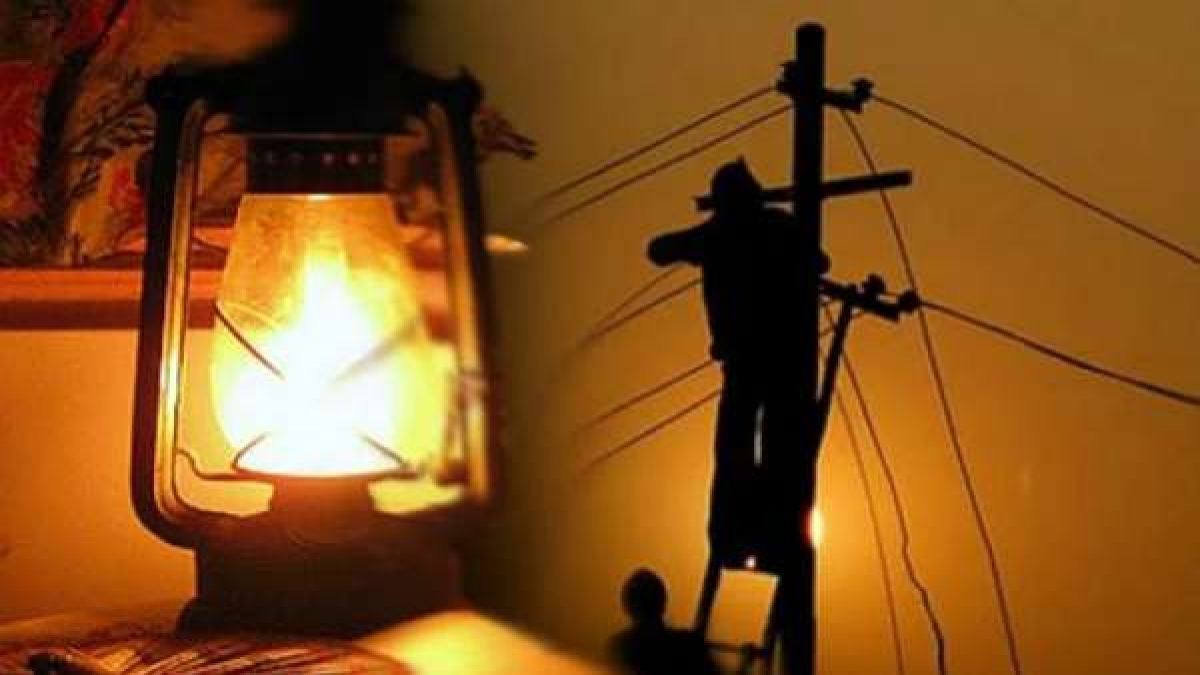
A Valley in the Dark: Kashmir’s Looming Power Struggle
Beyond the Blackout: Unmasking the Complexities of Kashmir’s Power Crisis
By: Javid Amin
Srinagar: Kashmir, a land synonymous with breathtaking landscapes, vibrant culture, and enduring resilience, currently faces a growing challenge: a crippling power shortage. This darkness, not just of the night sky but of a lack of electricity, throws a long shadow, impacting daily life, businesses, and the very fabric of this magnificent land.
From Buzz to Frustration: Consumers Face the Fallout:
For weeks, residents across the valley have endured frequent power outages and unpredictable “distress cuts,” often lasting for 4-5 hours a day. This disruption throws a wrench into the daily rhythm, plunging homes into darkness, rendering appliances useless, and creating a sense of frustration and helplessness.
“It’s like living in a constant state of limbo,” shares Amina, a resident of Srinagar. “You can’t plan your day, your work suffers, and even a simple cup of tea becomes a luxury when the power goes out.”
The irony is not lost on anyone. Recent advancements in infrastructure like smart meters and upgraded cables seem irrelevant when the fundamental issue of consistent power supply remains unresolved. The question on everyone’s lips: “What good are smart meters when there’s no power to meter?“
The Glimmer of Hope Extinguished – KPDCL Acknowledges the Crisis:
The Kashmir Power Development Corporation Limited (KPDCL), responsible for power distribution in the valley, has finally acknowledged the dire situation, confirming a power shortage of nearly 400 Megawatts (MW). This substantial deficit reveals a system under immense strain, impacting millions of lives in the process.
Unveiling the Roots of the Darkness:
Several factors contribute to Kashmir’s current power crisis:
- Demand Outpaces Supply: The power demand in the valley has increased significantly due to population growth, rising urbanization, and a growing dependence on electrical appliances. However, power generation capacity has not kept pace, leading to a significant supply shortfall.
- The Grip of Inefficiency: High power transmission and distribution (AT&C) losses further exacerbate the problem. These losses, estimated to be quite high, can be attributed to outdated infrastructure, inadequate maintenance, and, unfortunately, deliberate power theft. This theft not only undermines the system but also unfairly burdens those who pay their bills honestly.
- Nature’s Impact: The recent snowfall, while a source of beauty and rejuvenation for the valley, has also added to the power woes. Increased snowfall often leads to higher energy consumption for heating homes and businesses, further straining the already stretched grid.
Seeking Solutions: A Collective Effort for Brighter Days:
Despite the challenges, both KPDCL and the Power Development Department (PDD) are actively working to address the power shortage and improve the situation. Here’s an overview of the ongoing efforts:
- Streamlining the Flow: KPDCL is focusing on streamlining the power supply, aiming to optimize distribution and minimize losses. This may involve infrastructure upgrades, improved maintenance practices, and potential adjustments to the existing load curtailment program.
- Combating Theft: PDD is prioritizing tackling power theft through stricter monitoring and enforcement actions. This includes identifying areas with high AT&C losses, taking legal action against those involved in theft, and engaging in public awareness campaigns to highlight the negative consequences of this practice.
- Targeting High-Loss Areas: PDD is focusing on high-loss feeders, areas with significantly higher power losses due to theft or inefficiencies. These areas may experience additional power curtailment measures as part of the department’s efforts to minimize overall losses and improve the overall power supply situation.
- Addressing Unscheduled Outages: PDD has acknowledged the issue of unscheduled power cuts even in metered areas. Stricter actions are being taken against concerned officials to prevent unauthorized and unnecessary outages, ensuring a more predictable and reliable power supply for consumers with functioning meters.
Beyond Solutions: A Call for Collective Responsibility:
While these efforts offer a glimmer of hope, the path to resolving the power crisis in Kashmir is long and arduous. It requires a multi-pronged approach, encompassing infrastructure upgrades, improved management practices, and concerted efforts to curb power theft. Additionally, exploring renewable energy sources and promoting energy efficiency measures can contribute to long-term sustainable solutions.
Beyond just solutions, fostering a culture of responsible energy use and community engagement is essential. This can involve raising awareness about the consequences of power theft, encouraging the adoption of energy-efficient appliances and practices, and fostering a dialogue between consumers and power authorities.
A Cause for Concern: Collective Punishment for Individual Negligence:
However, a recent practice employed by the department raises ethical concerns and has added further fuel to the fire of discontent. In some instances, the department has resorted to cutting off power supply to entire areas due to pending bills of a few consumers within those areas. This “collective punishment” approach unfairly penalizes honest residents who have fulfilled their financial obligations. This practice not only fails to address the root cause of the problem (individual non-payment) but also fosters a sense of resentment and disenfranchisement among law-abiding citizens.
Seeking Solace in Community and Collaboration:
The power crisis in Kashmir is not just an issue of infrastructure and resource management; it is also a social and economic challenge. Finding solutions requires collaborative efforts, not just from government institutions and power companies, but also from the community itself.
Here’s how the community can play a crucial role:
- Spreading Awareness: Community leaders and organizations can work towards raising awareness about responsible energy consumption. This can involve educational campaigns, workshops, and community dialogues that highlight the importance of energy conservation and the negative consequences of power theft.
- Promoting Sustainable Practices: Advocating for the adoption of energy-efficient appliances and encouraging responsible energy consumption practices within households can lead to a collective reduction in demand, ultimately easing the strain on the power grid.
- Building Bridges: Fostering open communication and collaboration between community representatives, power authorities, and elected officials can ensure that concerns and solutions are heard and addressed effectively.
A Glimmer of Hope: A Brighter Future for Kashmir:
The current power shortage in Kashmir casts a long shadow, but it does not have to define the future of this resilient land. By acknowledging the challenges, exploring innovative solutions, and fostering a culture of responsible energy use and community engagement, a brighter future is within reach.
This future could hold:
- Reliable and Consistent Power Supply: A stable and predictable power supply is essential for ensuring the well-being of residents, supporting businesses and industries, and driving economic growth.
- Sustainable Energy Solutions: Investing in renewable energy sources like solar and hydro power can provide a long-term solution to Kashmir’s energy needs, reducing dependence on fossil fuels and minimizing environmental impact.
- Empowered Communities: Engaging communities in the process of finding solutions fosters a sense of ownership and empowers residents to become active participants in shaping their future.
Resolving the power crisis in Kashmir will not be easy, but it is an essential step towards building a stronger, more sustainable, and brighter future for the valley and its people. It requires not just technical solutions but also a collective commitment to responsible citizenship, sustainable practices, and the well-being of the community as a whole. By working together, the darkness can be overcome, and the valley can once again be illuminated by hope, progress, and the promise of a brighter tomorrow.

